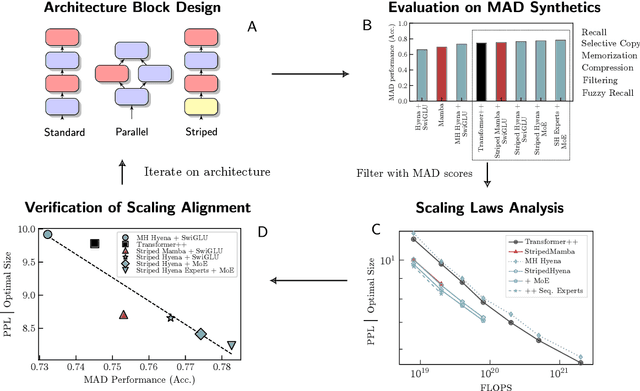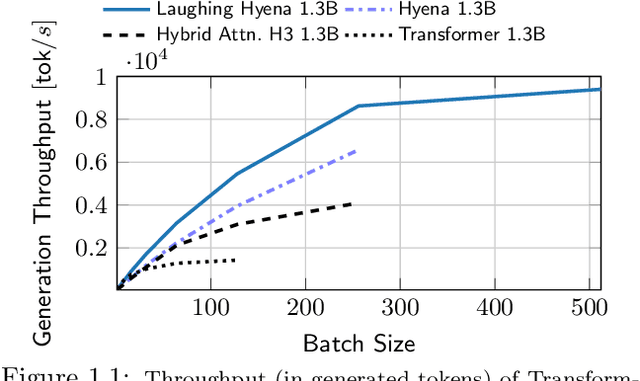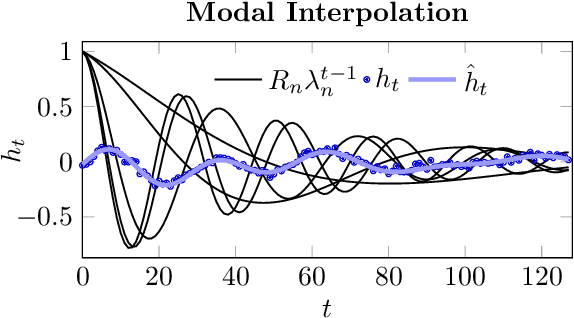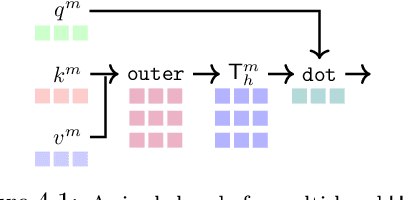Stefano Massaroli
VRPAgent: LLM-Driven Discovery of Heuristic Operators for Vehicle Routing Problems
Oct 08, 2025Abstract:Designing high-performing heuristics for vehicle routing problems (VRPs) is a complex task that requires both intuition and deep domain knowledge. Large language model (LLM)-based code generation has recently shown promise across many domains, but it still falls short of producing heuristics that rival those crafted by human experts. In this paper, we propose VRPAgent, a framework that integrates LLM-generated components into a metaheuristic and refines them through a novel genetic search. By using the LLM to generate problem-specific operators, embedded within a generic metaheuristic framework, VRPAgent keeps tasks manageable, guarantees correctness, and still enables the discovery of novel and powerful strategies. Across multiple problems, including the capacitated VRP, the VRP with time windows, and the prize-collecting VRP, our method discovers heuristic operators that outperform handcrafted methods and recent learning-based approaches while requiring only a single CPU core. To our knowledge, \VRPAgent is the first LLM-based paradigm to advance the state-of-the-art in VRPs, highlighting a promising future for automated heuristics discovery.
Exploring Diffusion Transformer Designs via Grafting
Jun 06, 2025Abstract:Designing model architectures requires decisions such as selecting operators (e.g., attention, convolution) and configurations (e.g., depth, width). However, evaluating the impact of these decisions on model quality requires costly pretraining, limiting architectural investigation. Inspired by how new software is built on existing code, we ask: can new architecture designs be studied using pretrained models? To this end, we present grafting, a simple approach for editing pretrained diffusion transformers (DiTs) to materialize new architectures under small compute budgets. Informed by our analysis of activation behavior and attention locality, we construct a testbed based on the DiT-XL/2 design to study the impact of grafting on model quality. Using this testbed, we develop a family of hybrid designs via grafting: replacing softmax attention with gated convolution, local attention, and linear attention, and replacing MLPs with variable expansion ratio and convolutional variants. Notably, many hybrid designs achieve good quality (FID: 2.38-2.64 vs. 2.27 for DiT-XL/2) using <2% pretraining compute. We then graft a text-to-image model (PixArt-Sigma), achieving a 1.43x speedup with less than a 2% drop in GenEval score. Finally, we present a case study that restructures DiT-XL/2 by converting every pair of sequential transformer blocks into parallel blocks via grafting. This reduces model depth by 2x and yields better quality (FID: 2.77) than other models of comparable depth. Together, we show that new diffusion model designs can be explored by grafting pretrained DiTs, with edits ranging from operator replacement to architecture restructuring. Code and grafted models: https://grafting.stanford.edu
Quantifying Memory Utilization with Effective State-Size
Apr 28, 2025Abstract:The need to develop a general framework for architecture analysis is becoming increasingly important, given the expanding design space of sequence models. To this end, we draw insights from classical signal processing and control theory, to develop a quantitative measure of \textit{memory utilization}: the internal mechanisms through which a model stores past information to produce future outputs. This metric, which we call \textbf{\textit{effective state-size}} (ESS), is tailored to the fundamental class of systems with \textit{input-invariant} and \textit{input-varying linear operators}, encompassing a variety of computational units such as variants of attention, convolutions, and recurrences. Unlike prior work on memory utilization, which either relies on raw operator visualizations (e.g. attention maps), or simply the total \textit{memory capacity} (i.e. cache size) of a model, our metrics provide highly interpretable and actionable measurements. In particular, we show how ESS can be leveraged to improve initialization strategies, inform novel regularizers and advance the performance-efficiency frontier through model distillation. Furthermore, we demonstrate that the effect of context delimiters (such as end-of-speech tokens) on ESS highlights cross-architectural differences in how large language models utilize their available memory to recall information. Overall, we find that ESS provides valuable insights into the dynamics that dictate memory utilization, enabling the design of more efficient and effective sequence models.
STAR: Synthesis of Tailored Architectures
Nov 26, 2024Abstract:Iterative improvement of model architectures is fundamental to deep learning: Transformers first enabled scaling, and recent advances in model hybridization have pushed the quality-efficiency frontier. However, optimizing architectures remains challenging and expensive. Current automated or manual approaches fall short, largely due to limited progress in the design of search spaces and due to the simplicity of resulting patterns and heuristics. In this work, we propose a new approach for the synthesis of tailored architectures (STAR). Our approach combines a novel search space based on the theory of linear input-varying systems, supporting a hierarchical numerical encoding into architecture genomes. STAR genomes are automatically refined and recombined with gradient-free, evolutionary algorithms to optimize for multiple model quality and efficiency metrics. Using STAR, we optimize large populations of new architectures, leveraging diverse computational units and interconnection patterns, improving over highly-optimized Transformers and striped hybrid models on the frontier of quality, parameter size, and inference cache for autoregressive language modeling.
State-Free Inference of State-Space Models: The Transfer Function Approach
May 10, 2024Abstract:We approach designing a state-space model for deep learning applications through its dual representation, the transfer function, and uncover a highly efficient sequence parallel inference algorithm that is state-free: unlike other proposed algorithms, state-free inference does not incur any significant memory or computational cost with an increase in state size. We achieve this using properties of the proposed frequency domain transfer function parametrization, which enables direct computation of its corresponding convolutional kernel's spectrum via a single Fast Fourier Transform. Our experimental results across multiple sequence lengths and state sizes illustrates, on average, a 35% training speed improvement over S4 layers -- parametrized in time-domain -- on the Long Range Arena benchmark, while delivering state-of-the-art downstream performances over other attention-free approaches. Moreover, we report improved perplexity in language modeling over a long convolutional Hyena baseline, by simply introducing our transfer function parametrization. Our code is available at https://github.com/ruke1ire/RTF.
Mechanistic Design and Scaling of Hybrid Architectures
Mar 26, 2024



Abstract:The development of deep learning architectures is a resource-demanding process, due to a vast design space, long prototyping times, and high compute costs associated with at-scale model training and evaluation. We set out to simplify this process by grounding it in an end-to-end mechanistic architecture design (MAD) pipeline, encompassing small-scale capability unit tests predictive of scaling laws. Through a suite of synthetic token manipulation tasks such as compression and recall, designed to probe capabilities, we identify and test new hybrid architectures constructed from a variety of computational primitives. We experimentally validate the resulting architectures via an extensive compute-optimal and a new state-optimal scaling law analysis, training over 500 language models between 70M to 7B parameters. Surprisingly, we find MAD synthetics to correlate with compute-optimal perplexity, enabling accurate evaluation of new architectures via isolated proxy tasks. The new architectures found via MAD, based on simple ideas such as hybridization and sparsity, outperform state-of-the-art Transformer, convolutional, and recurrent architectures (Transformer++, Hyena, Mamba) in scaling, both at compute-optimal budgets and in overtrained regimes. Overall, these results provide evidence that performance on curated synthetic tasks can be predictive of scaling laws, and that an optimal architecture should leverage specialized layers via a hybrid topology.
Laughing Hyena Distillery: Extracting Compact Recurrences From Convolutions
Oct 28, 2023



Abstract:Recent advances in attention-free sequence models rely on convolutions as alternatives to the attention operator at the core of Transformers. In particular, long convolution sequence models have achieved state-of-the-art performance in many domains, but incur a significant cost during auto-regressive inference workloads -- naively requiring a full pass (or caching of activations) over the input sequence for each generated token -- similarly to attention-based models. In this paper, we seek to enable $\mathcal O(1)$ compute and memory cost per token in any pre-trained long convolution architecture to reduce memory footprint and increase throughput during generation. Concretely, our methods consist in extracting low-dimensional linear state-space models from each convolution layer, building upon rational interpolation and model-order reduction techniques. We further introduce architectural improvements to convolution-based layers such as Hyena: by weight-tying the filters across channels into heads, we achieve higher pre-training quality and reduce the number of filters to be distilled. The resulting model achieves 10x higher throughput than Transformers and 1.5x higher than Hyena at 1.3B parameters, without any loss in quality after distillation.
Learning Efficient Surrogate Dynamic Models with Graph Spline Networks
Oct 25, 2023Abstract:While complex simulations of physical systems have been widely used in engineering and scientific computing, lowering their often prohibitive computational requirements has only recently been tackled by deep learning approaches. In this paper, we present GraphSplineNets, a novel deep-learning method to speed up the forecasting of physical systems by reducing the grid size and number of iteration steps of deep surrogate models. Our method uses two differentiable orthogonal spline collocation methods to efficiently predict response at any location in time and space. Additionally, we introduce an adaptive collocation strategy in space to prioritize sampling from the most important regions. GraphSplineNets improve the accuracy-speedup tradeoff in forecasting various dynamical systems with increasing complexity, including the heat equation, damped wave propagation, Navier-Stokes equations, and real-world ocean currents in both regular and irregular domains.
HyenaDNA: Long-Range Genomic Sequence Modeling at Single Nucleotide Resolution
Jun 27, 2023Abstract:Genomic (DNA) sequences encode an enormous amount of information for gene regulation and protein synthesis. Similar to natural language models, researchers have proposed foundation models in genomics to learn generalizable features from unlabeled genome data that can then be fine-tuned for downstream tasks such as identifying regulatory elements. Due to the quadratic scaling of attention, previous Transformer-based genomic models have used 512 to 4k tokens as context (<0.001% of the human genome), significantly limiting the modeling of long-range interactions in DNA. In addition, these methods rely on tokenizers to aggregate meaningful DNA units, losing single nucleotide resolution where subtle genetic variations can completely alter protein function via single nucleotide polymorphisms (SNPs). Recently, Hyena, a large language model based on implicit convolutions was shown to match attention in quality while allowing longer context lengths and lower time complexity. Leveraging Hyenas new long-range capabilities, we present HyenaDNA, a genomic foundation model pretrained on the human reference genome with context lengths of up to 1 million tokens at the single nucleotide-level, an up to 500x increase over previous dense attention-based models. HyenaDNA scales sub-quadratically in sequence length (training up to 160x faster than Transformer), uses single nucleotide tokens, and has full global context at each layer. We explore what longer context enables - including the first use of in-context learning in genomics for simple adaptation to novel tasks without updating pretrained model weights. On fine-tuned benchmarks from the Nucleotide Transformer, HyenaDNA reaches state-of-the-art (SotA) on 12 of 17 datasets using a model with orders of magnitude less parameters and pretraining data. On the GenomicBenchmarks, HyenaDNA surpasses SotA on all 8 datasets on average by +9 accuracy points.
What if We Enrich day-ahead Solar Irradiance Time Series Forecasting with Spatio-Temporal Context?
Jun 01, 2023



Abstract:Solar power harbors immense potential in mitigating climate change by substantially reducing CO$_{2}$ emissions. Nonetheless, the inherent variability of solar irradiance poses a significant challenge for seamlessly integrating solar power into the electrical grid. While the majority of prior research has centered on employing purely time series-based methodologies for solar forecasting, only a limited number of studies have taken into account factors such as cloud cover or the surrounding physical context. In this paper, we put forth a deep learning architecture designed to harness spatio-temporal context using satellite data, to attain highly accurate \textit{day-ahead} time-series forecasting for any given station, with a particular emphasis on forecasting Global Horizontal Irradiance (GHI). We also suggest a methodology to extract a distribution for each time step prediction, which can serve as a very valuable measure of uncertainty attached to the forecast. When evaluating models, we propose a testing scheme in which we separate particularly difficult examples from easy ones, in order to capture the model performances in crucial situations, which in the case of this study are the days suffering from varying cloudy conditions. Furthermore, we present a new multi-modal dataset gathering satellite imagery over a large zone and time series for solar irradiance and other related physical variables from multiple geographically diverse solar stations. Our approach exhibits robust performance in solar irradiance forecasting, including zero-shot generalization tests at unobserved solar stations, and holds great promise in promoting the effective integration of solar power into the grid.
 Add to Chrome
Add to Chrome Add to Firefox
Add to Firefox Add to Edge
Add to Edge